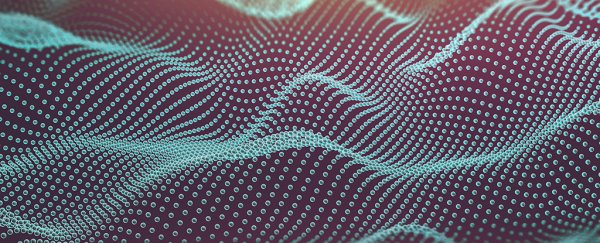We could be able to control matter at a whole new level of precision after scientists discovered a way of manipulating individual molecules for a millionth of a billionth of a second – an unprecedented level of fine-tuning way beyond what we've seen before.
It was made possible with a scanning tunnelling microscope (STM) and a set of results from a standard experiment that didn't make sense: an increase in electric current wasn't leading to a faster reaction, as you would normally expect in this kind of lab test.
Digging deeper, researchers from the University of Bath in the UK found they had stumbled across a way to control these single-molecule experiments by moving the tip of the STM closer to the molecule being studied – and that could open up a whole new field of possibilities for nanoscale experiments and discoveries.
"Our work offers a new route to control single molecules and their reaction," says one of the team, physicist Peter Sloan. "Essentially we have a new dial we can set when running our experiment."
"The extreme nature of working on these scales makes it hard to do, but we have extreme resolution and reproducibility with this technique."
STMs are used to create very fine, atom-level 2D or 3D images of a surface by scanning it with an electrical probe tip. In the case of the experiments carried out at the University of Bath, individual electrons were being observed hitting and reacting to a molecule through the use of a very small current.
Funnily enough, the unusual results that one of these experiments threw up were noted by physicist and team member Kristina Rusimova while studying the data on holiday – not that we'd necessarily recommend working while on your vacation, but still.
"This was data from an utterly standard experiment we were doing because we thought we had exhausted all the interesting stuff – this was just a final check," says Rusimova. "But my data looked wrong – all the graphs were supposed to go up and mine went down."
The abnormalities eventually led to the discovery that by keeping the probe tip within 600-800 trillionths of a metre from the molecule, the electron came unstuck after impact about 100 times faster. That in turn meant individual toluene molecules could be lifted off a silicon surface in a controlled way.
What's happening is actually a new nanoscale quantum state between microscope tip and molecule, the researchers think – a new channel is created for the electron to travel on, reducing the time it spends on the molecule and reducing the chances of a reaction.
It also means that the experiment can be turned from a passive one (just observing what's happening) to a more active one, where researchers have the opportunity to control reactions and base experiments on them.
What those new experiments and new discoveries might be remains to be seen, but for physicists it's an exciting step forward in this field of study. There's a lot we still don't understand about physics at the nanoscale, so any new tools and methods scientists can manipulate are going to be welcome.
"The fundamental aim of this work is to develop the tools to allow us to control matter at this extreme limit," says Sloan.
"Be it breaking chemical bonds that nature doesn't really want you to break, or producing molecular architectures that are thermodynamically forbidden."
The research has been published in Science.
